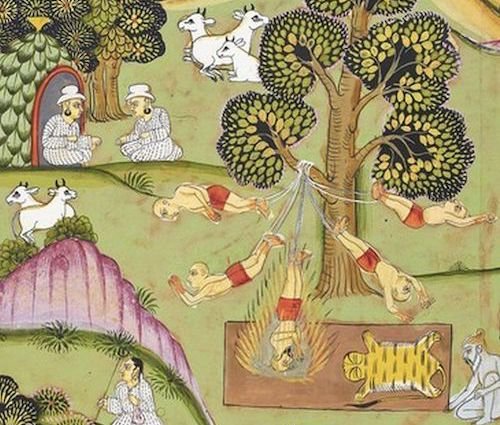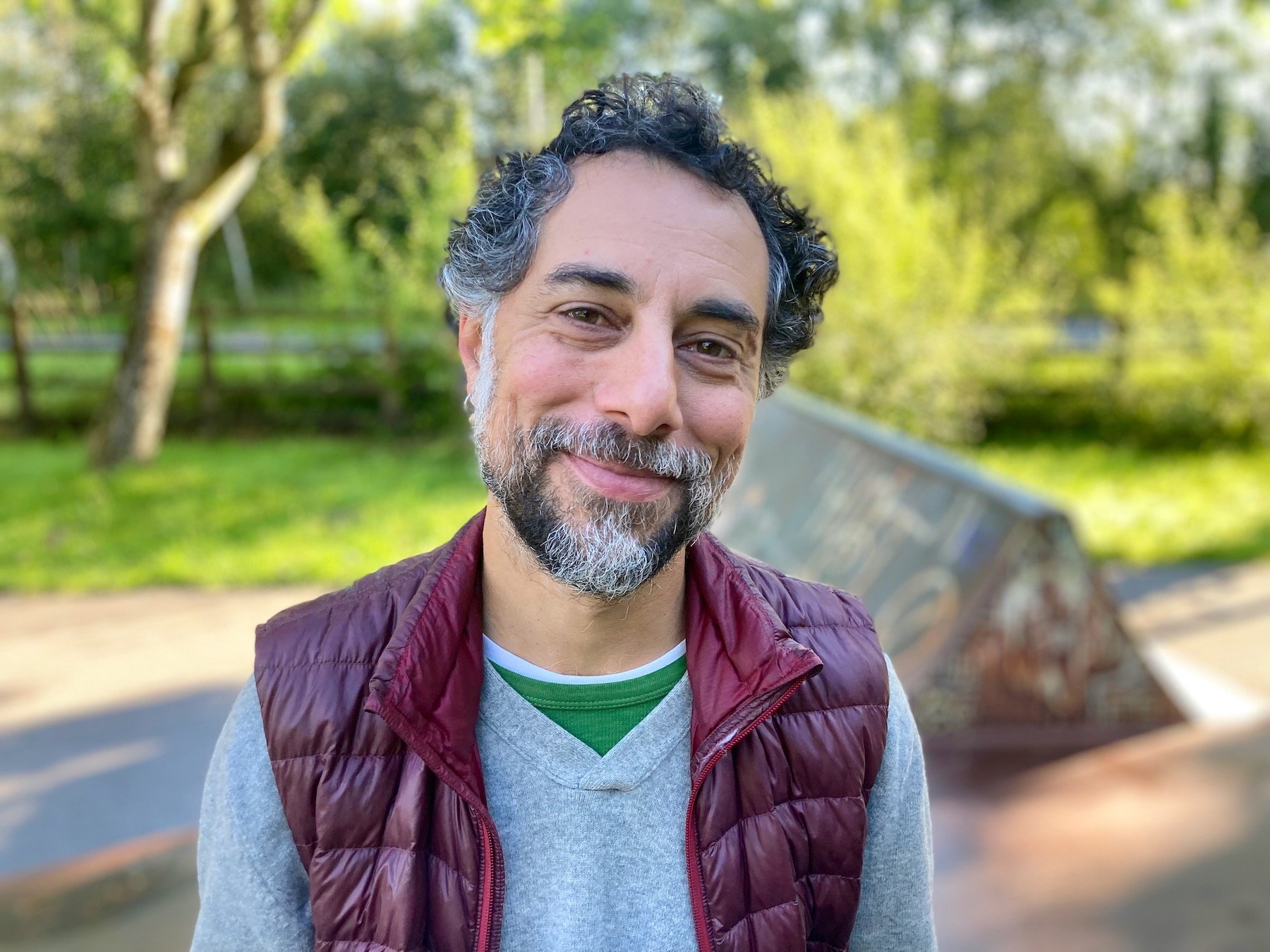
Intro to the History of Yoga
Philosophy, Practice, Transformation
There is no fetter like illusion, no force greater than Yoga,
no friend greater than knowledge, and no enemy greater than ego.
(Gheraṇḍa Saṁhitā 1.4, tr. Mallinson)
About this Course
Dive into the ocean of ideas, practices, and culture that evolved into modern yoga, looking at over 2500 years of South Asian cultural and spiritual innovation, including profound philosophical inquiry into the nature of the human experience, and the disciplines of meditation, mantra, ritual, and breath that are the heart of Yoga as a spiritual path.
A deeper relationship with your practice awaits. One with a stronger understanding and reverence for the culture from which these transformative practices arose.
The creation of this course was born out of Dr. Oakes’ passion for supporting and strengthening modern Yoga education and his extensive research of the material to create a robust and thorough curriculum for Yoga Teacher Training programs. After years of presenting versions of this course in both 200 and 500 hour YTT programs, we are making this course widely available so that more practitioners can have access to, and benefit from engaging with, this material.
Integrating history & practice
The course explores Yoga from two perspectives: history & practice.
Through the lens of history, ideas are explored by looking at the cultural conditions that surrounded them, the dynamic social and political contexts in which Yoga developed.
Through the lens of practice, we engage with the teachings of Yoga as spiritual practitioners, concerned with the result of dedicated practice in our lives and relationships now.
Dr. Oakes is a skilled storyteller, bringing complex, nuanced material to life and inviting all participants to engage personally with the lessons. The content of the course is delivered in a thoughtful progression, building depth of understanding and including time for personal inquiry and reflection.
Take this Course
All courses are offered in the Gift Economy model. This course is available on a wide sliding scale, based on self-assessment of your income and ability to offer your resources in a way that supports others with lesser resources to attend. Please support us in using the Gift Economy model by engaging sincerely with the process and selecting the highest level you can on the sliding scale (or beyond it). Your generosity directly gifts scholarship support to those who need it, and allows us to share these teachings with everyone who might benefit from them, regardless of access to wealth. Thank you!
SELECT A TIER TO ENROLL:
Further scholarships are offered as widely as possible and based on request. Our goal is to not turn anyone away for lack of resources, both for this course and future offerings. Email us here to request a scholarship.
What’s included
16 hours of engaging, high quality video lecture, organized into 8 topics, or “classes.”
Hundreds of beautiful slides with classical imagery & text excerpts.
Comprehensive downloadable manual (over 70 pages!), including text excerpts & suggestions for further study.
Inquiry questions to support you on your path.
Lifetime access to the course!
-
1.1 Intro: What is Yoga?
1.2 The Indus Valley Civilization
1.3 Two Vedic Hymns
1.4 Yoga in the Upaniṣads
1.5 Death as Guru: The Kaṭha Upaniṣad
1.6 Q & A, 25 Tattva (elements)
1.7 Practice: 5 Great Elements & 5 Senses
1.8 Q & A
Class 1 Inquiry: Renunciation & discomfort
-
2.1 Śramana review & stories of Young Gotama
2.2 Gotama studies Yoga
2.3 Gotama’s ascetic practice & childhood insight
2.4 Q & A: formless concentration & ancient yoga practice
2.5 Early Buddhist philosophy & practice
2.6 Two Early Buddhist practices
Class 2 Inquiry: The Buddha & his community
-
3.1 Opening Practice: Sense Experience & Awareness
3.2 Core Doctrines of Classical Yoga
3.3 The Philosophical Schools of Yoga & Sāṃkhya
3.4 The Philosophy of the Yoga-Sūtra, part 1
3.5 Patañjali Q & A: Yama
3.6 The Philosophy of the Yoga-Sūtra, part 2: 8 Limbs
3.7 Meditation based on the Yoga-Sūtra of Patañjali
Class 3 Inquiry: Flow, stillness, ethics
-
4.1 The Great Indian Epic: Mahābhārata, part 1
4.2 The Great Indian Epic: Mahābhārata, part 2
4.3 Teachings of the Bhagavad Gītā, part 1: karma
4.4 Teachings of the Bhagavad Gītā, part 2: yoga; colonialism
4.5 Teachings of the Bhagavad Gītā, part 3: bhakti
4.6 Bhakti Practices: mantra, chanting, kirtan
Class 4 Inquiry: Karma & Devotion
-
5.1 Intro to Second Half of Course & Review
5.2 Two Classical Yoga Practices: Meditation & Mantra; Q & A
5.3 So many Gods & Goddesses
5.4 Myth: Churning the Ocean of Milk
5.5 Vaiṣṇava Bhakti: Stories of Viṣṇu in the form of Kṛṣṇa
5.6 Śaiva Goddess Worship: Stories of Devī in the Forms of Durgā & Kālī
Class 5 Inquiry: Deities & mythology
-
6.1 Review & Intro to Tantric Philosophy: Dualism & Non-dualism
6.2 Tantra in Indian History: Philosophy & Practice
6.3 Tantra in Practice: The Guru Principle, Q & A
6.4 Principles of Tantra: Definitions, Texts, Doctrines
Class 6 Inquiry: social norms & gender in Tantra
-
7.1 The Tantric Roots of Haṭha Yoga
7.2 Practices of Early Haṭha Yoga
7.3 The Haṭha Yoga Pradīpikā: Practices
7.4 The Haṭha Yoga Pradīpikā: kuṇḍalinī, lāya, Q & A
Class 7 Inquiry: Health, power, & sex in Haṭha Yoga
-
8.1 Meditation: Sensation, embodiment, gratitude
8.2 Yoga comes West: Emerson, Vivekananda, Colonialism
8.3 “Modern Yoga”: Northern & Southern Lineages
8.4 Issues: cultural appropriation, spiritual materialism, race, diversity & inclusion, feminism, body image
Class 8 Inquiry: Modernity & all its issues
Are you a studio owner or YTT instructor?
This course is available for your YTT program! Our robust coverage of the history & philosophy of Yoga can plug right into your curriculum, and is available at an affordable group rate.
Meet your teacher, Dr. Sean Oakes
He/they, queer, Puerto Rican & English ancestry, living on unceded Pomo land in Northern California
Sean teaches Buddhism, Yoga, and somatic practice, focusing on philosophical inquiry, trauma healing, devotion, and social engagement as expressions of the Dharma. He wrote his dissertation on extraordinary states in Buddhist meditation and experimental dance, and teaches at Spirit Rock Meditation Center and elsewhere. Read more about…
